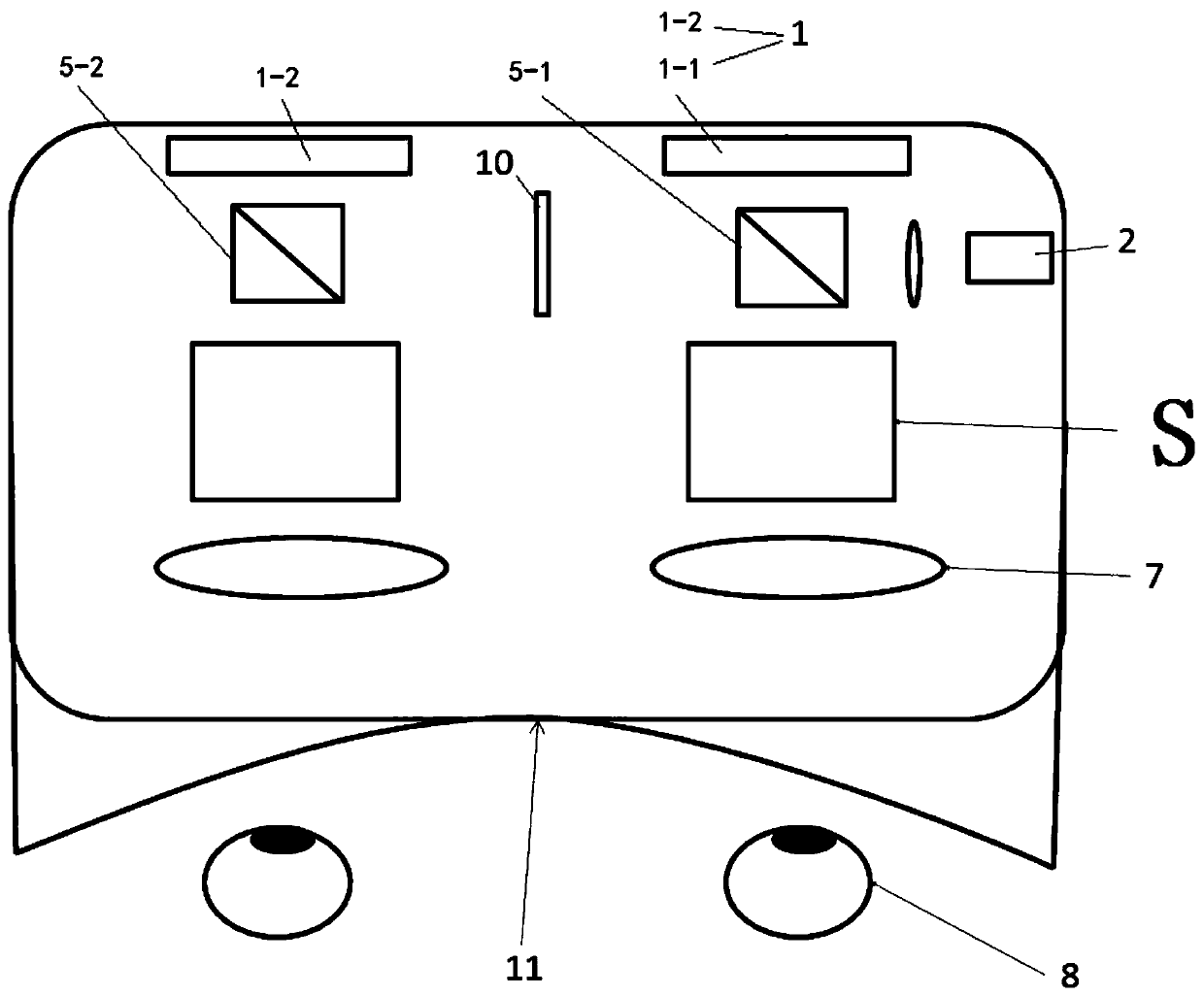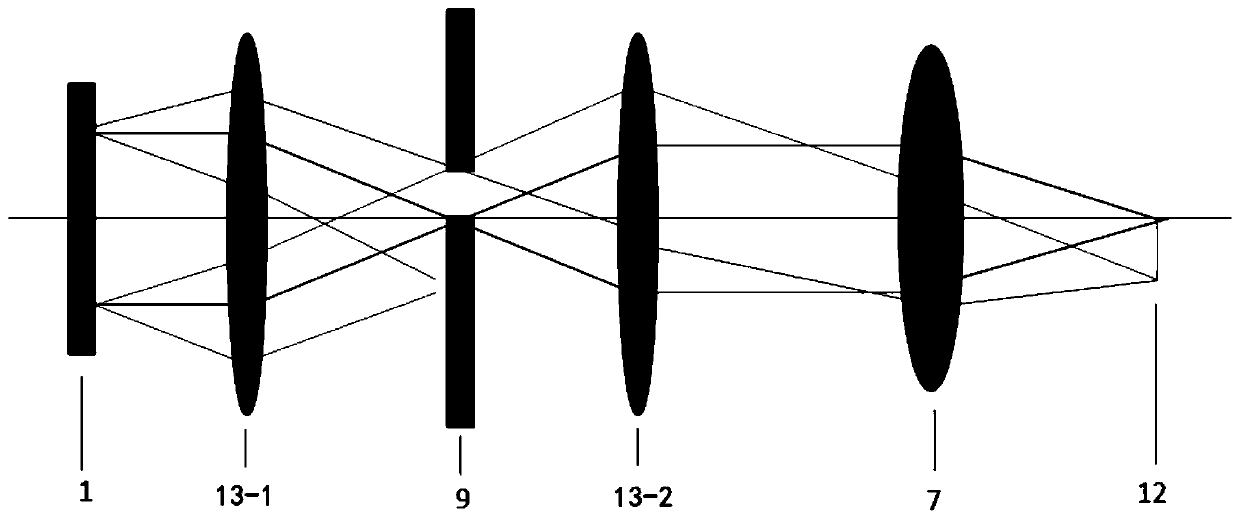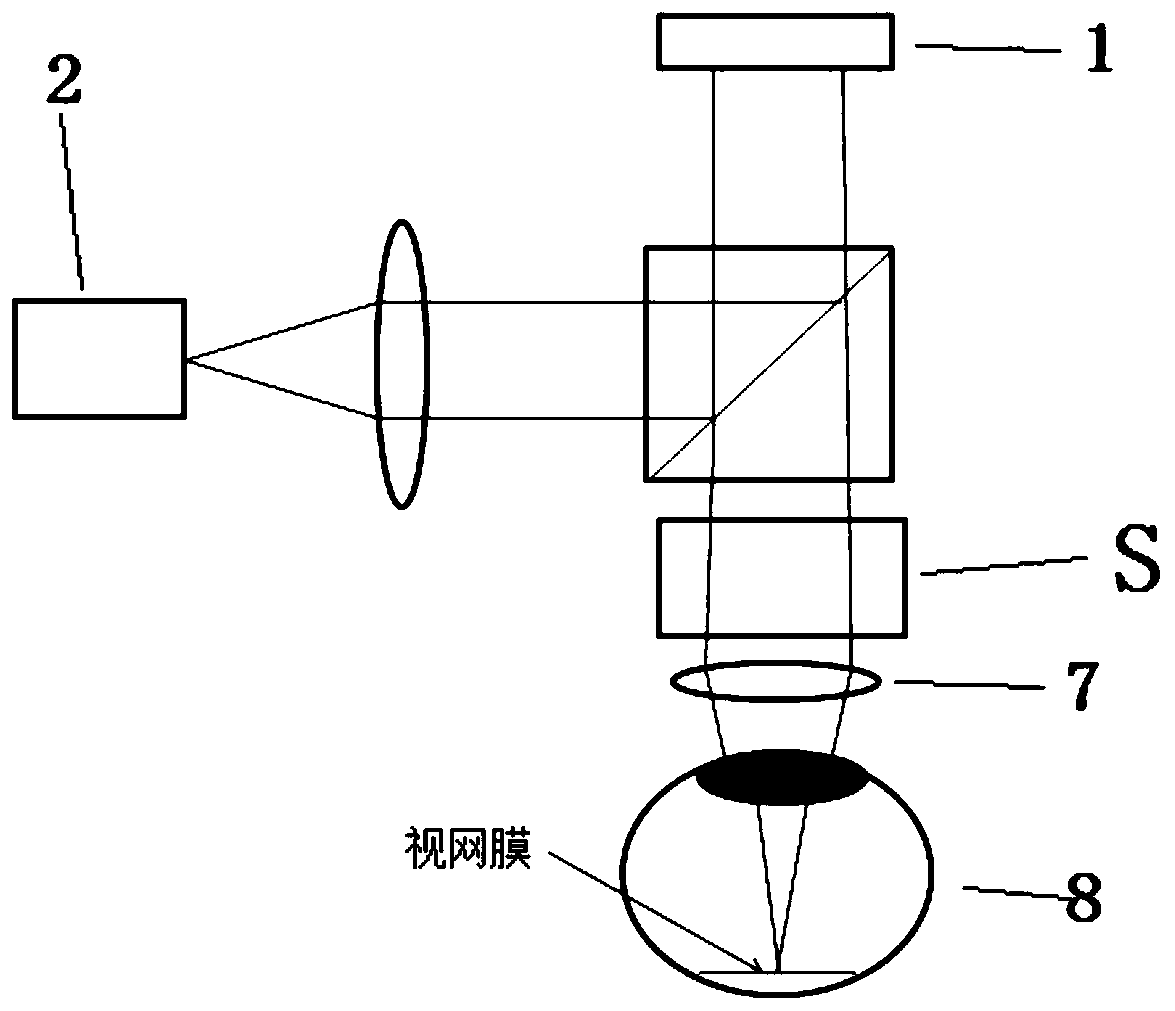Optical structure of holographic 3D virtual reality glasses
A three-dimensional virtual and optical structure technology, applied in optics, optical components, instruments, etc., can solve problems such as the inconsistency between the interaction distance and the imaging distance, the three-dimensional sense is not realistic enough, and it cannot be adapted to the wearer, so as to achieve a good three-dimensional observation effect and observation The effect of short distance and low power requirements
- Summary
- Abstract
- Description
- Claims
- Application Information
AI Technical Summary
Problems solved by technology
Method used
Image
Examples
Embodiment 1
[0027] In this example, see Figure 1~4 , a kind of optical structure of holographic three-dimensional virtual reality glasses, which mainly includes a readout light source 2 and two sets of optical path systems installed in the glasses frame 11, and the power supply supplies power for the readout light source 2 and two sets of optical path systems, wherein the first set of optical path systems and The second set of optical path systems is composed of a set of 4f system filtering structures using Fourier transform. The 4f system filtering structure using Fourier transform is mainly composed of an optical modulator 1 and an optical 4f system Fourier lens group. According to calculations, the two sets of optical path systems generate The imaging distance of the holographic image is different, and a three-dimensional holographic image is presented at different distances in front of the corresponding optical 4f system Fourier lens group. Through the corresponding eyepiece 7, the c...
Embodiment 2
[0039] This embodiment is basically the same as Embodiment 1, especially in that:
[0040] In this embodiment, each optical path system uses the transmissive optical modulator 1 to form the imaging optical path, so no light splitting structure is needed, and the structure is simpler and more compact. In the 4f system filtering structure using Fourier transform, the optical 4f system Fourier lens group is made up of a diaphragm 9 with a small hole and a convex lens assembly, the diaphragm 9 is arranged at the focal point of the first convex lens 13-1, and the The second convex lens 13-2 is arranged at the double focal length of the first convex lens 13-1 to form a 4f optical system. The diffracted image light emitted from the light modulator 1 enters the first convex lens 13-1, and then enters through the diaphragm 9 to the second convex lens 13-2, and then enter the observer's eye 8 through the eyepiece 7. The two sets of optical path systems correspond to the two three-dimens...
Embodiment 3
[0042] This embodiment is basically the same as the previous embodiment, and the special features are:
[0043] In this embodiment, the readout light source 2 adopts an LED lamp as a light source. Using a relatively low-power LED lamp as the light source does not require a beam expander, and improves the safety of the optical system on the premise of saving energy.
PUM
 Login to View More
Login to View More Abstract
Description
Claims
Application Information
 Login to View More
Login to View More - R&D
- Intellectual Property
- Life Sciences
- Materials
- Tech Scout
- Unparalleled Data Quality
- Higher Quality Content
- 60% Fewer Hallucinations
Browse by: Latest US Patents, China's latest patents, Technical Efficacy Thesaurus, Application Domain, Technology Topic, Popular Technical Reports.
© 2025 PatSnap. All rights reserved.Legal|Privacy policy|Modern Slavery Act Transparency Statement|Sitemap|About US| Contact US: help@patsnap.com



